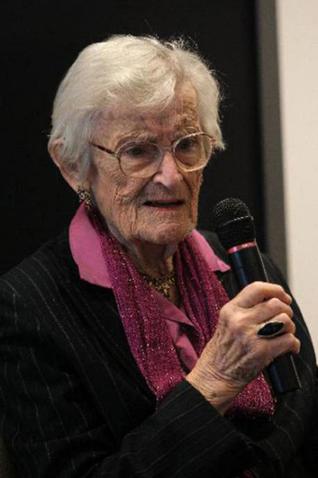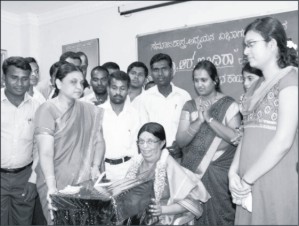Pages from History

by Prof. A.V.Narasimha Murthy
Dr. Channa Reddy was the Governor of Lucknow University and at the suggestion of Prof. B.N. Puri, we went to the Raj Bhavan and called on the Governor. When I was introduced by Prof. Puri to His Excellency, I told him, ‘Sir, I have met you twice in Hyderabad; once in the company of Mallampalli Somasekhara Sharma and on another occasion with Oruganti Ramachandariah, both my gurus.’ He was pleased and told me, ‘in that case why are you not talking to me in Telugu.’ The Governor continued, ‘you are fortunate that you were a student of Mallampalli. He is a great man. You know, he is not even a graduate but his book History of Reddi Kingdom is an authoritative book on the subject. Four doctorate degrees can be awarded to that research work. When I had recommended his name for professorship at the Andhra University, the authorities turned it down on the ground that he has no Master’s degree and a doctorate. Finally, I got him selected as a Visiting Professor…’
The other day I was reading my own book Chadurida Chitragalu in Kannada published on the occasion of my 75th birthday by Talukina Venkannaiah Smaraka Publications of T. S. Chayapati. It contains 75 anecdotes relating to me which incidentally throw light on the contemporary academic and social scene. Fortunately this book was welcomed by Kannada readers and it has become out-of-print and its next edition is due. I thought I should share with my readers two of the incidents which I considered interesting.
Lucknow University in Uttar Pradesh has a renowned Department of Ancient Indian History and I used to visit that University for many official purposes. Prof. B.N. Puri was the Professor at Lucknow University and on his invitation I visited the University. At that time, Dr. Channa Reddy was the Governor and at the suggestion of Dr. Puri we went to Raj Bhavan and called on the Governor. I was introduced by Dr. Puri to His Excellency, the Governor. I told him, ‘Sir, I have met you twice in Hyderabad; once in the company of Mallampalli Somasekhara Sharma and on another occasion with Oruganti Ramachandariah, both my gurus.’ He was pleased and told me, ‘in that case why are you not talking to me in Telugu.’ He turned towards Dr. Puri and said, ‘hope you don’t mind if we talk in Telugu.’
The Governor continued, ‘you are fortunate that you were a student of Mallampalli. He is a great man. You know, he is not even a graduate. But his book History of Reddi Kingdom is an authoritative book on the subject. Four doctorate degrees can be awarded to that research work. What a pity! When I had recommended his name for professorship at the Andhra University, the authorities turned it down on the ground that he has no Master’s degree and a doctorate. Finally, I got him selected as a Visiting Professor. I felt the Andhra University should have considered itself proud to have such a great scholar on its faculty.’ Thus he expressed his unhappiness over the way in which the University behaved.
Subsequently, he remembered with respect many of his Professors working at the Andhra University. He continued, ‘you are from Karnataka. There was a great visionary by name R.R. Diwakar, a scholar and Statesman. He planned a work called Karnataka Through the Ages and it was published under his guidance. After seeing that wonderful volume, I told many Professors and Vice-Chancellors to take up the work Andhra Through the Ages. But nobody took any interest in it and such a book has not been published for Andhra so far and again he felt sad about it.
Finally, he turned towards Dr. Puri and said what is the purpose of your visit. Dr. Puri talked about some official matters and added that it will be good if Prof. Narasimha Murthy is nominated for Selection Committees of the Universities in UP. He smiled and said no problem. It was done and I was nominated as the Chancellor’s nominee which gave me opportunities of visiting Lucknow, Banaras Hindu University, Allahabad, Garhwal etc. We took leave of the Governor. Dr. Puri was highly pleased. After my retirement I have not visited Lucknow University nor Dr. Puri. Only memories remain.
Dr. T.N. Chaturvedi was the Governor of Karnataka and I knew him as a great scholar in Ancient Indian History prior to his becoming the Governor. I used to meet him at functions and talk to him. Infact he released my book on Sringeri at the Gokhale Institute, Bangalore, and had praised my book. As General Secretary of South Indian Numismatic (coin) Society, I wanted to arrange the annual conference at Dravidian University, Kuppam. Dr. Gangiraju Lakshminarayana was its Vice-Chancellor. As soon as I told him that I was a student of Mallampalli and Oruganti, he got up from his seat, hugged me and said, ‘You are a fortunate person.’ Immediately he agreed to my suggestion of holding the Numismatic Conference at Kuppam.
He added, ‘I have been trying to arrange the visit of His Excellency Dr. T.N. Chaturvedi to our University. But travelling by road is very tedious and hence it has not materialised. I will be grateful if you can request Dr. Chaturvedi to inaugurate this conference.’
I went to the Raj Bhavan and personally invited the Governor. His Private Secretary suggested the Governor not to accept the invitation because of the tedious and hazardous journey to Kuppam. Further it is outside the Karnataka State. I lost hopes. But His Excellency, the Governor, turned towards me and said, ‘but I cannot say no to Prof. Murthy; let us somehow manage.’ As I felt happy, the Secretary was disappointed. After a couple of days, I met the Governor and handed over the printed invitation. ‘I will definitely come,’ he assured me.
One day before the conference, I went to Kuppam to look into the arrangements and I was satisfied by the arrangements made by the Vice-Chancellor. The Governor arrived at 10 am on 21.1.2006 at the venue and he inaugurated the conference and made a good speech about our coins. He even traced the antiquity of our coinage during the Vedic period when a gold coin called Nishka was used. He referred to the coin reforms made by Muhammad-bin-Tughlaq. Finally he referred to the British coins and post-independent era coins. He called upon the coin collectors to collect as many coins as possible and save them for posterity as they have a heritage value.
I felt very happy as he mentioned my name three times during his speech and I also felt proud. That year I was awarded the P.L. Gupta Medal for my contribution to South Indian Numismatics. I received that medal from T.N. Chaturvedi.
The inauguration was over and it was lunch time. The Police and the Collector had arranged his lunch at the Vice-Chancellor’s Bungalow and the invitees were the Police and Revenue Officials. As soon as he saw them, he called the ADC and told him to invite me, Krishhnamurthy, Conference President and others so that he could talk to them over lunch. All of us had good lunch in the exalted company of the Governor with lot of academic discussions.
After some rest, he sent for me and said, ‘Prof. Murthy, I would like to meet the delegates for sometime over a cup of tea.’ It was arranged and he mixed freely with all the delegates and enquired about their collections. Some of the specialists showed some coins which he saw with the help of a lens and appreciated their efforts.
It was time for him to leave for Bangalore at 5 pm. His car came and I went upto him and thanked him profusely. He said, ‘special thanks to Prof. Murthy for having given me an opportunity to inaugurate this conference and thereby educating me regarding our ancient coinage which is a valuable heritage.’ The car left and Vice-Chancellor Dr. Lakshminarayana was supremely happy and said, ‘my desire of getting the Governor Dr. Chaturvedi to our University was fulfilled by you, Prof. Murthy; I am grateful to you.’
We were in regular correspondence till Dr. Lakshminarayana retired from the Vice-Chancellorship of the Dravidian University. He had invited me to deliver special lectures at this University.
Almost after many years, the memories of these two events with two enlightened Governors are still green in my memory. That gives me the satisfaction of having accomplished a responsibility that was expected of me. Perhaps that is my strength.
source: http://www.starofmysore.com / Star of Mysore / Home> Feature Articles / May 03rd, 2014



